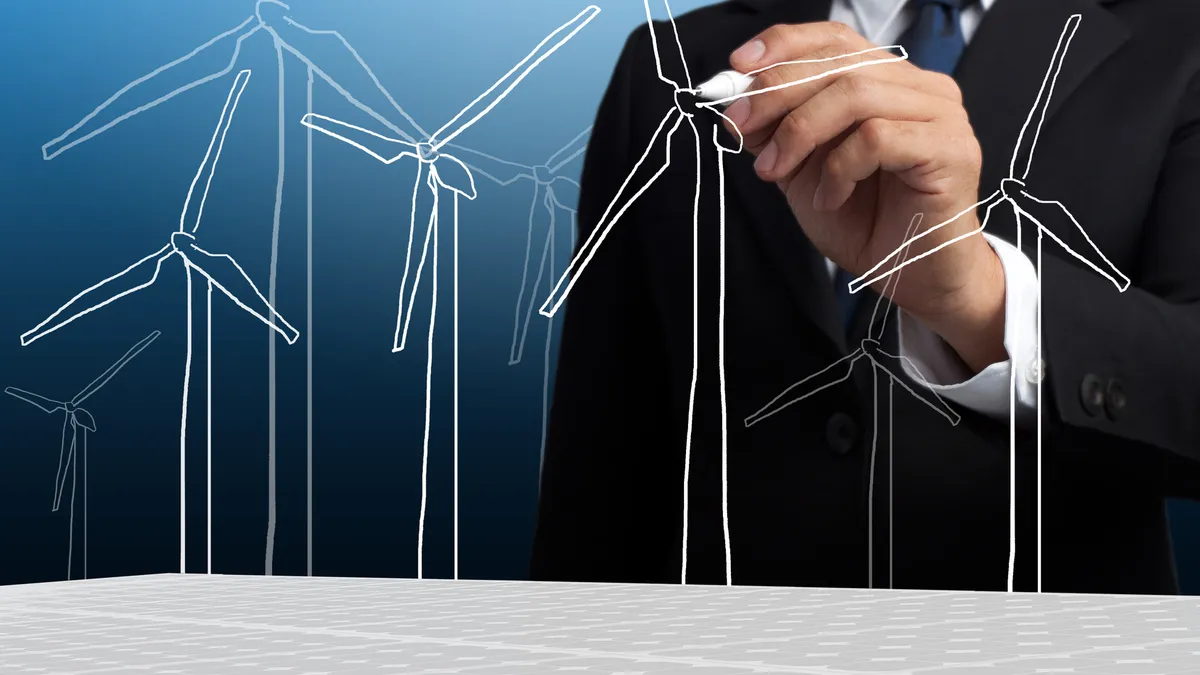Dive Brief:
-
The value of global power and utilities deals reached an all-time high of $180 billion in the first half of the year despite a 14% decline in the last quarter, according to an Ernst & Young (EY) report published on Monday.
-
The size and volume of renewable energy deals continued to grow, representing 46% of the $83 billion power and utility sector deals worldwide in the second quarter, according to the Power Transactions and Trends: Q2 2018 report. The largest single transaction was the $27.4 billion bid by China Three Gorges to take over Portugal's EDP, which owns transmission and distribution assets across Europe.
- The report shows the United States led in M&A deals, generating 75% of the deal value of which $21.1 billion or 78% were domestic deals.
Dive Insight:
In the Americas, consolidation drove deal activity, EY said.
The largest deals in the second quarter was Center Point Energy's $8.1 billion bid for Vectren and NextEra Energy's $5.8 billion bid for Gulf Power. The first deal is designed to expand Center Point's competitive energy services across a larger footprint with an aim of improving customer service. The second would improve NextEra's financial position and expand the company's customer base by 450,000, the authors said.
Utilities also continue to divest generation assets. AltaGas sold a 35% stake in three hydroelectric facilities for $709 million to assist with the funding of its acquisition of WGL Holdings. Sempra Energy plans to sell its 2,600 MW of U.S. wind and solar assets in an effort to optimize its portfolio. And Southern Company sold its stake in several gas-fired plants to NextEra for $6.5 billion in an effort to reduce debt, preserve its credit rating and to boost the relative contribution of its regulated utilities to its overall revenues.
One of the drivers of MA& activity in the U.S. are the effects of the tax reform bill that became law at the end of 2017. Those reforms are beginning to make an impact on regulated utilities because they often are being required to pass on the savings from tax cuts on to consumers and that is putting pressure on utility revenues.
Some companies have responded to the effects of the tax reforms by raising equity. PPL in May launched a $1.7 billion capital offering, and in June Energy raised $1.2 billion in equity. Other companies, such as Southern Co. and Duke Energy, have announced plans to raise equity this year.
Another trend noted in the EY report is the rise of energy storage. During the second quarter, Pacific Gas and Electric requested regulatory approval for what is likely to be the largest series of energy storage projects to date. Those projects demonstrate the increasing economics of large-scale storage, the authors said.
Renewable energy investments continue to grow and take up an increasing share of deal volume, EY said. In the U.S., New York has launched a $1.5 billion solicitation for renewable energy projects to help meet its 50% by 2030 clean energy standard. And MidAmerican Energy plans to invest $922 million to build a 591 MW wind farm in Iowa.
Clean energy is likely to grow globally, the authors said, noting that the European Union reached an agreement to achieve 32% renewable energy consumption by 2030. Japan's Tokyo Electric Power also has launched a subsidiary to form joint ventures around the development of disruptive technologies.
In the Americas, however, returns on renewable investments were off in the quarter. The report attributed that to several factors, including policy uncertainty regarding renewables in the U.S., legislation introduced in Ontario calling for the cancellation of 758 renewable energy contracts and a drought in Brazil that has affected hydropower utilities.














